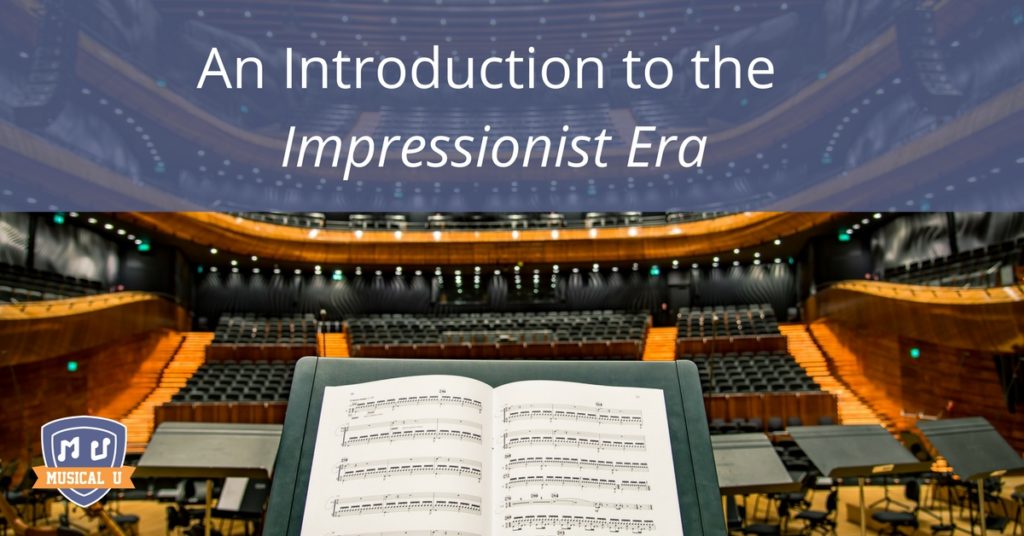“Impressionism” is a musical style most often credited to the French composer, Claude Debussy. If you’re used to thinking of “impressionism” as a type of art, you might be interested to learn that the term became linked to music thanks to artwork like Monet’s “Impression, Sunrise.”
Just as visual impressionist pieces used starkly contrasting colours and blurred images, impressionist music was designed to convey a mood or emotion rather than distinct sounds in a song.
The idea of impressionism in music – which emerged during the late 19th and early 20th centuries – was to focus on the atmosphere and suggestion of feelings that a collection of instruments could create. In other words, it asked people to focus on the emotions that were aroused by a subject as opposed to focusing on a detailed picture or single tune.
What Defined Impressionist Era Music?
Although Claude Debussy is credited with the creation of “impressionist” music, he didn’t actually like the term. In fact, in a letter, he mentioned that only “imbeciles” would call his creations impressionism. Despite this, Debussy’s “impressionist” works were defined by their ability to capture emotions using characteristic harmonies and exotic scales.
Some of the most prominent scales in impressionist music are:
- The Pentatonic Scale: popularly associated with English, Irish, and Scottish folk tunes as well as traditional Chinese music.
- Parallel Motion: in classical music, tension was produced by voices and instruments moving in a contrary fashion, while impressionism used chords in a parallel manner.
- Modal Influence: typical of modal music, the music frequently emphasised perfect intervals, octaves, fourths, and fifths in parallel structures.
The Elements of Impressionistic Music
The idea of impressionism was to create a sound that lacked any distinct direction. The sounds that were produced included static harmonies and emphasised instrumental timbres designed to avoid traditional musical form.
For many composers at the time, the impressionist era developed as a response against Romanticism. While music from the Romantic period often had loud and aggressive climaxes, impressionist music is made up of showers of sound crafted with harps, flutes, and clarinets. The standard harmonic progressions in Romanticism were replaced by gentler, softer sounds.
The rhythms of impressionist music are vague and free with undefined cadences and fluid melodies. For people who love classical music, impressionism is something that can be listened to on almost any occasion.
The best way to understand the feelings that impressionism can evoke is to listen to pieces produced by some of the most prominent composers of the era. While the visual arts had Monet, Van Gogh, and Homer, the music world gave us masterpieces from artists like Frederic Chopin, Franz Liszt, and George Gershwin, among others.
Impressionism is an emotional masterpiece and is unique and inspiring, particularly to budding artists. It’s focus on emotion offers a brief break from the rules and regulations that seem to restrict other forms of classical music and offered composers a way to better express themselves and their opinions through melody.
Do you have any favourite composers from the impressionist era?
Have you played songs from this movement yourself and if so, how do they make you feel?
Let us know in the comments below!







